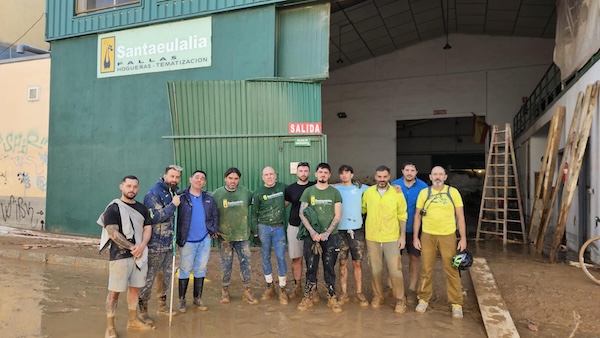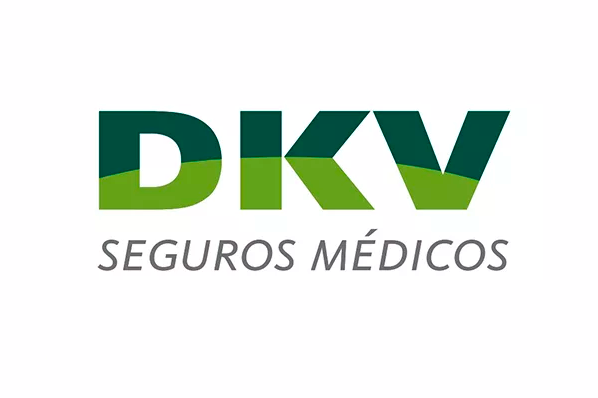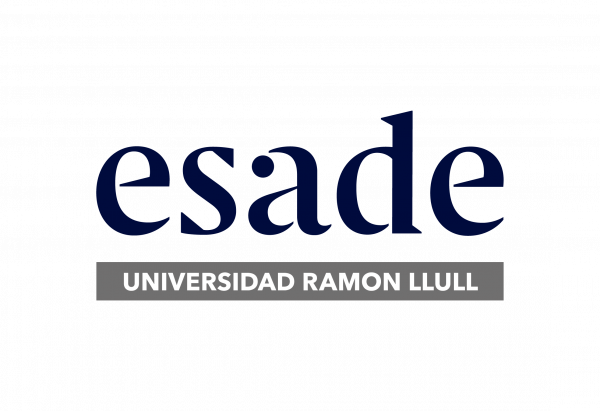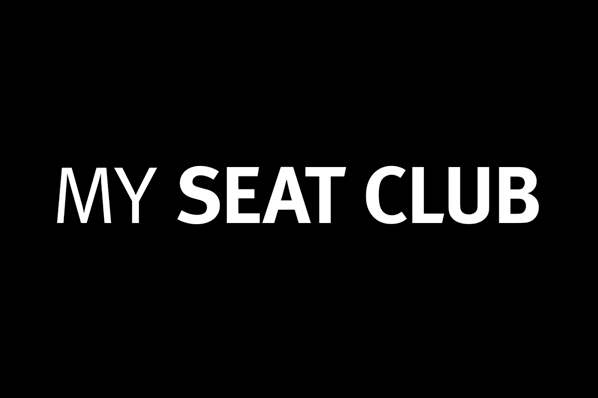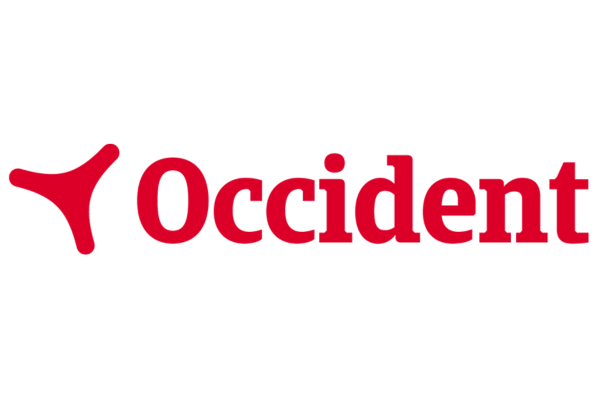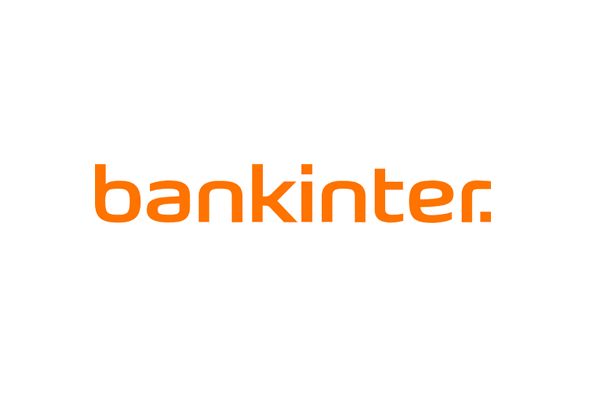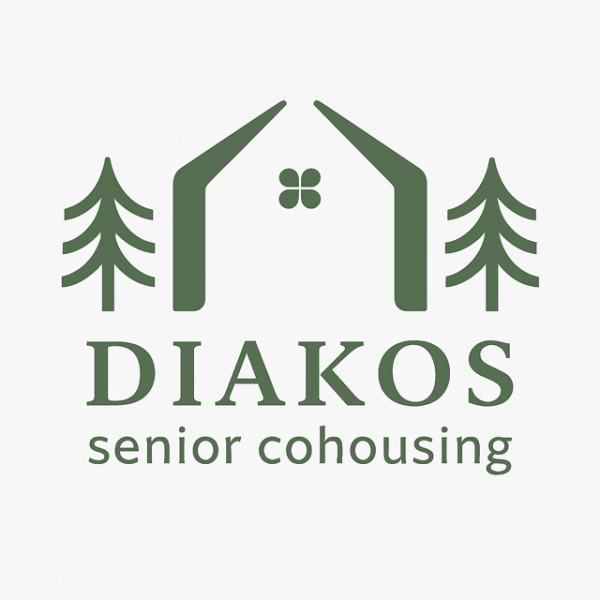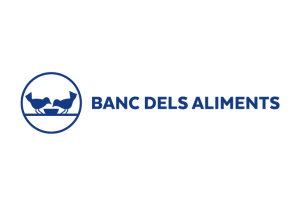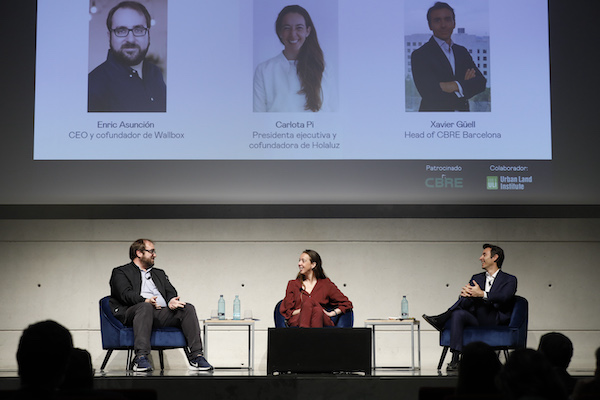
The Esade Alumni Real Estate Club’s 13th Real Estate Trends Seminar focused on technology companies, a key sector for the present and future real estate ecosystem of Barcelona. The seminar featured the participation of experts such as Colin Yasukochi, Executive Director of the Tech Insights Center at CBRE, Enric Asunción, co-founder and CEO of Wallbox, and Carlota Pi, co-founder and Executive President of Holaluz.com.
The 13th Real Estate Trends Seminar kicked off with the news of Carmina Ganyet (VV ‘03) taking office as the club’s new president, announced by Enrique Martínez Laguna (MBA ‘93), Vice President of the Esade Alumni Real Estate Club. In her remarks, Ganyet noted that the industry is at a turning point and needs to rethink its future in light of the current challenges. She also invited the entire Esade Alumni community to take part in this reflection process – hence the seminar’s focus on role of technology and talent in the development of cities.
Colin Yasukochi, Executive Director of the Tech Insights Center at CBRE, reviewed key aspects of the successful model of Silicon Valley and other American cities with a view to understanding where Barcelona should be heading if it wants to keep growing as a technology cluster. His talk, entitled “Silicon Valley: The Road to Success”, discussed how Silicon Valley has managed to attract venture capital funds in recent years to expand its technology industry. He then compared these efforts with those of Barcelona, which is home to 42% of Spanish venture capital investments and has a great capacity to retain talent.
Following the example of how Silicon Valley operates, Yasukochi noted that cities aiming to host a thriving technology ecosystem need to have technological talent, universities, venture capital funds, technology hubs, coworking spaces, business services, large companies and government support, while also being an ideal environment for product testing.
Entrepreneurs Made in Barcelona
Xavier Güell, Managing Director of CBRE Barcelona, kicked off a panel discussion entitled “Entrepreneurs Made in Barcelona” by asking whether Barcelona can really be considered a technological city. He answered this question with data, such as the fact that the city leads Europe in terms of hiring for tech jobs, and that nearly 50% of spaces rented in the past year are occupied by technology companies.
To gain a better understanding of how technology companies operate in Barcelona, we had the opportunity to hear about the experiences of Carlota Pi and Enric Asunción, the leaders of Holaluz and Wallbox, respectively.
Carlota Pi, co-founder and Executive President of Holaluz.com, explained that the company was founded 10 years ago with the vision of changing the world and making the planet operate on 100% green energy. Holaluz is leading the transformation of the Spanish energy sector with a commitment to self-consumption, electric mobility and customer centricity. The company’s success is reflected in its figures, such as its 49% year-on-year growth over the last seven years. According to Pi, the fundamental elements of the company are technology, capital and investments, but most importantly people – the heart of the company. With regard to the future of the energy sector, she declared: “We really need to move towards sustainability. The fact that electricity is becoming more and more expensive is a catalyst to achieve this: a cheap, sustainable solution is the most logical thing.” As for Barcelona, Pi explained that the city has a powerful ecosystem because it provides a setting conducive to life.
“We really need to move towards sustainability. The fact that electricity is becoming more and more expensive is a catalyst to achieve this: a cheap, sustainable solution is the most logical thing”
Along similar lines, Wallbox creates advanced energy-management and electric-vehicle-charging systems that redefine the relationship between users and the electric grid by offering a broad portfolio of energy-management and charging solutions for residential, business and public use that allow users to control their consumption, save money and live more sustainably. Enric Asunción, co-founder and CEO of Wallbox, explained that, with Wallbox solutions, a car can power a house for four days. The company aims to become the energy hub of every household. “I am very optimistic about the future of the industry because we are moving towards an unstoppable transition to cleaner and cheaper energy,” he commented. As for Barcelona, Asunción said that the city has offered him everything he needs to develop his business project, but that he has enjoyed limited access to financing.
“I am very optimistic about the future of the industry because we are moving towards an unstoppable transition to cleaner and cheaper energy”
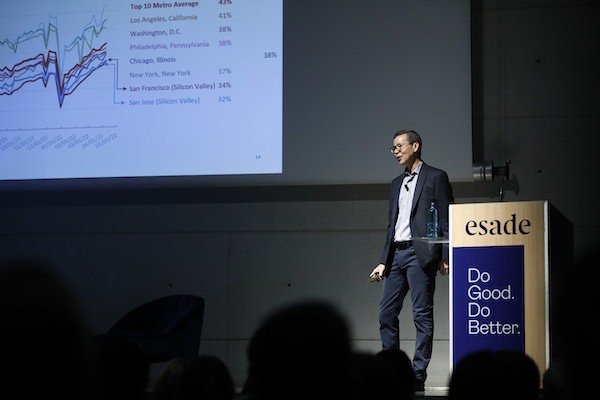 |

Interview with Carmina Ganyet (VV ‘03), President of the Esade Alumni Real Estate Club
What does becoming President of the Real Estate Club mean to you?
It is a responsibility, both because of the changing times we are living in, and also because we want the club to be a part of this debate, all while respecting Esade’s values, which include transparency, commitment, leadership, sustainability and innovation. My challenge is also to make the link between Esade and Esade Alumni permeable, so that new generations end up becoming leaders of the sector. In this club, it is essential that alumni find a forum for debate, training, analysis, rigour and professionalism, and that together we create the future leaders of the industry.
What will your priorities be during your term of office? What new developments can alumni expect to see?
We want to create several committees that will be open to as many alumni as possible, from as many backgrounds as possible. To take just one example, we want to create an ESG committee, with the aim of transferring ESG policies to the real estate industry, in light of the major social impact that these policies can have. Another example would be an innovation committee, with a view to promoting and consolidating the challenge of innovation. Markets and investors are necessary to attract capital; therefore, they are also stress points to be considered by a committee. We also want to have a communication committee to analyse relationships with all stakeholders and regulators. And we will also work on the residential sector and its emerging needs. We are open to collaborating with other Esade Alumni clubs and with any group linked to Esade that wants to participate on these committees and transform the industry in the best possible way to face the challenges of the future.
What challenges does the real estate industry face in the post-COVID-19 era?
We are in a fast-changing world with very short and increasingly uncertain cycles. In the real estate industry, we have to adapt to these changes very quickly. The first challenge we face is macroeconomics. We have seen how Russia invaded Ukraine. This is affecting the expected economic recovery, and it will surely also force come companies to adjust their strategies. The second challenge has to do with the social environment. COVID-19 has accelerated certain behaviours that generate housing needs and new assets, new ways of living and working. All of these social behaviours have a direct impact on real estate activity. For example, the office sector is transforming towards a more experiential sector, where space for sharing and socialising takes on greater importance. Our third challenge is regulation. It is important that the demand for different assets is accompanied by the corresponding regulation. Finally, there is the challenge of innovation and technology. In order to achieve an efficient energy and climate transition, we must analyse construction processes and building efficiency, since our industry is one of the main generators of CO₂ emissions.
|






